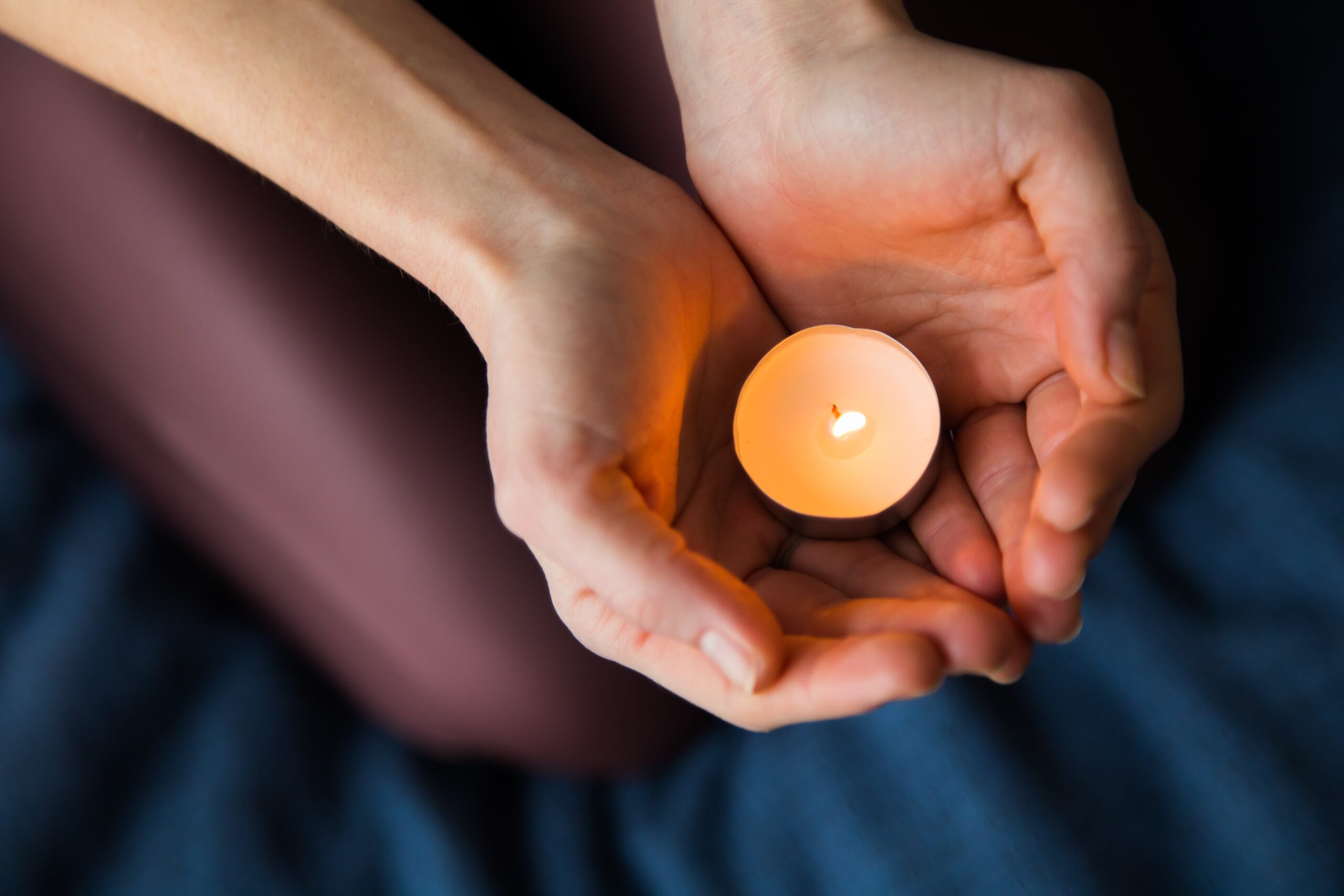“Mercury Retrograde”, the heavenly movement that frequently becomes the scapegoat for triggering misunderstandings, a dearth of clarity, and hurdles in diverse modes of communication, is on the horizon. Brace yourself for a phase during which Mercury, the celestial messenger, embarks on its backward journey, potentially stirring the cosmic waters of interaction. What sets this particular Mercury retrograde apart from its 2023 predecessors is the planetary-dance occurring as Mercury transitions from Capricorn to Sagittarius. The pre-retrograde shadow started casting its influence November 25th and concludes with the post-retrograde shadow dissipating on January 20, 2024. As we prepare for the final Mercury retrograde of 2023, it is essential to recognize that, although it shares similarities with its predecessors this year, this event unfolds with distinctive characteristics as Mercury transitions through Capricorn and Sagittarius. Delving into the dynamics of this retrograde reveals a unique interplay between the steadfast energy of Capricorn and the restive nature of Sagittarius. This particular retrograde introduces a theme that stimulates profound contemplation, inspiring individuals to pursue ambitious goals, garner recognition, and achieve long-held aspirations. While the disciplined influence of Capricorn encourages focused dedication, the retrogrades presence in Sagittarius introduces an element of restlessness, resulting in unexpected delays and challenges. This juxtaposition creates a dynamic interplay between the pragmatic and the adventurous – a cosmic tug-of-war that may evoke a head-versus-heart sensation, prompting you to push boundaries and navigate through perceived limitations. Is Mercury in retrograde a bad thing? As Mercury takes its apparent backward journey, the astrological forecast often includes warnings of revisiting old patterns or relationships, cautioning against the repetition of past mistakes. It is a cosmic phenomenon that seems to spark a curious trend – many people contemplate reaching out to their exes during this time, seeking closure or revisiting unresolved emotions. However, astrologers advise against such actions, emphasizing that the perception of Mercury retrograde as a time for rekindling old flames might not align with its cosmic reality. The Universal truth is that an individual’s perception is their reality. Individuals who are fixated on the doom and gloom of life and are expecting everything to go wrong will find just that. However, if you are aware of this energy and plan ahead, you will be prepared and will be ready to circumvent potential pitfalls. Review where you are investing energy Mercury retrograde often bears the brunt of blame for the seemingly universal chaos that infiltrates our daily lives. However, beyond its reputation as a heavenly troublemaker, this period offers a valuable opportunity for introspection and contemplation. It is a time to cast an introspective eye on where you channel your time and energy. Consider this… have work commitments eclipsed precious moments with family? Are you inadvertently sidelining cherished hobbies due to a hectic schedule? While it is easy to attribute disruptions to the cosmic dance of Mercury, the truth is that balance is a necessity. Mercury retrograde simply serves as a cosmic reminder to pause, reassess, and ensure your life aligns with your values and priorities. Take advantage of this astrological interlude not just to blame the stars, but to honestly evaluate whether your current equilibrium brings you contentment. Above all, don’t panic – Embrace the shift As we immerse ourselves in the energy of Mercury retrograde, it is essential to maintain a positive perspective on its potential impacts. While there is talk of cosmic shifts, it is important to recognize that these influences are simply how we view them. It is possible to find the silver lining of every situation, if you simply reframe your outlook on a situation. If it feels like the usual rhythm is taking a joyful detour, consider that the heightened awareness during this period might be playing a part in amplifying the cosmic energy. The act of paying closer attention to potential changes can bring about a positive sense of heightened awareness, adding an extra layer of mindfulness to our daily lives. There is an old saying that applies to this time… I never knew how brightly the stars shine at night… until I lost my roof. Rather than succumbing to stress over perceived issues, it is more beneficial to roll with the punches. Embracing a calm demeanor not only contributes to a positive overall outlook but positions you better to navigate any unexpected twists that may come your way during this cosmic phase. Remember, the power lies in adapting with resilience rather than letting apprehension take the reins. Time to revisit the skeletons in your closet Embracing the transformative energy of the Mercury retrograde, individuals are presented with a unique opportunity to delve deep into the recesses of their internal landscapes. This cosmic phenomenon serves as an auspicious time to confront and address any proverbial skeletons lurking in the closets of our minds and hearts. Rather than shying away from the shadows, the retrograde invites us to engage in the essential internal work needed for personal growth and self-discovery. Consider this period as an open invitation to embark on a journey of introspection and self-reflection. The notion of the “dark night of the soul” work takes center stage, encouraging individuals to confront their innermost fears, doubts, and unresolved issues. By doing so, we pave the way for profound healing and personal evolution. This isn’t a time to fear the internal shadows but an opportunity to illuminate them, bringing to light aspects of ourselves that may have long been in the shadows. Through this internal excavation, we lay the foundation for a more authentic and aligned existence, aligning with the transformative energies of the cosmos and emerging from the retrograde with newfound clarity and resilience. Now that you have started to clear your “emotional closets”, the Mercury retrograde period is also the perfect time to go into your “physical closets”, clean them out, and donate the items that no longer fit you or fit your style. Refine and review communications As the celestial bodies dance in the starry night, Mercury takes the lead in governing communication in all its
Using stone (pul’laka) for heavy energy release
Have you ever been in a situation when something unpleasant and perhaps unfair happened to you, and you neither had an opportunity to respond nor were in a position to defend your grounds, provide explanations, present your opinion? And afterwards the memories of the event do not let you find peace and inner tranquility as you keep thinking about the case, delivering brilliant speeches within silent emptiness of the closet, making fair and powerful statements in the shower, and so on, and so forth… Or perchance you were witnessing a particular conflict or argument and did not have enough courage at the moment to step in and help to resolve the dispute, or you overlooked an opportunity to express well kept appreciation, compassion or devotion to someone, or you could have made a witty and appropriate comment, but someone cut you off… In addition, objectively it may not be a big deal at all, you understand and accept that it is not worth spending so much time and energy on processing the experience, but you can’t help yourself. Surely you can address the issue to a professional, but often it may feel slightly awkward to set a whole session for a minor problem solution, although therapists are amazingly useful and beneficial in a great variety of challenging situations. In Siberian shamanic tradition there is a helpful technique which is called “talking to a stone”; in Sel’kup language stone is called “pul’laka”. Here is what one can do in order to pull yourself from the vicious circle of destructive self-talk over a minor or insignificant issue. Set up an hour or so, go to the Nature or as close as you can get to the wilderness in your area. Greet the place, greet the Spirits of the Land and Mother Earth the way that feels the most appropriate to you. Recognize and verbalize the issue, energies of which you want to ground and release. Perhaps there is a person in mind, and you have unexpressed emotions or words towards that person, the situation they have created, etc. Set an intention to clear up the energies which you experience as repetitive thinking and overthinking, writing and overwriting scenarios of possible outcomes where you are the “winner”. Ask the Spirits of the Land and Mother Earth to help you to find a perfect stone or pul’laka for the ceremony, and start looking for it. Walk around, tune into the energies of the place, let your intuition lead and guide your search. When you see the “right” stone, you feel it: greet the pul’laka, express your gratitude out loud or not. Take your pul’laka, hold it in your hands. Keep in mind that courageous spirit of the stone volunteered to take and release your energetic burden: it is sacred work of the Nature. Hold pul’laka in your hand and start talking to it: describe the situation that bothers you, complain, blame, express anger if there is any, dump resentment, bitterness… if you need to repeat some phrases or words, do it! Keep talking, feel the flow of the energies which are coming out. Perhaps while talking about the issue, a memory of the past similar event or situation pops up in mind, tell pul’laka everything that comes up. If you feel like you need to scream or cry, do it! Keep talking to pul’laka until you start feeling empty and slightly tired, until you notice that you have nothing else to say. Stop and breathe for some time, feel how your energy field is reconfiguring itself. Maybe it is time to smile and say sincere “Thank you!” or “Tat Fa Kup!”. While expressing gratitude energetically separate yourself from the pul’laka, it is a small energy conversion box now. If there is a river, creek or lake nearby, throw your pul’laka in there with gratitude and intention to harm none. When you are far from water, find an appropriate place to hide pul’laka on the surface of the Earth with the same intention and gratitude to All.
Astrology, Free Will and Predestination
One constant in astrology is how powerful it becomes when used retrospectively. These patterns in the sky have been carefully studied across generations, which inspires me to write about them. Growing interest in astrology will never fade because studying what’s above you is a practical idea. On the other hand, some astrologers buy into this study being the embodiment of predestination, believing what’s written in the stars is guaranteed to happen with no free will involved. This viewpoint is delicate, with a lot of room for nuance. A horoscope or powerful transit can speak loudly about future themes without exposing every detail of the experience itself. No matter how accurate an astrologer can be, qualities like hindsight and retrospect will be there to one-up any concept related to fate. Free will and predestination are the same in that both are just outside of our perception. Even as multidimensional human beings, the only thing that we can truly perceive is this moment. Both predestination and free will are always waiting seconds after this current moment, and it’s how you work with the latter that matters. For natal charts, there are three aspects often used that feel like “fate.” Both the North and South Nodes of the moon resonate with soul growth (the north node) and familiarity (the south node). There’s a strong karmic pull in either direction; both aspects are always in opposite signs across 18 months. Any transit or synastry that highlights the North Node may feel like you’re part of something that helps you grow immensely, while the South Node influence feels like something you’ve always known. For the South Node, it’s important to be mindful of familiarity that hinders your ability to grow. The symbol for these placements are shaped like a horseshoe. (☊ NN / ☋ SN) The last aspect is known as the vertex. When energies overlap (conjunct) the vertex in natal charts, an undeniable feeling is attached to the person or experience. For example, a Venus transit over my vertex lets me tap into my artistic side with ease. Mars over my vertex highlights passion and drive, followed by outlets to release built-up energies. From experience, the Vertex always makes for people or encounters that are meant to be significant (regardless of longevity). The symbol for vertex in charts often looks like a “Vx” positioned on the right side of the wheel.
Harmony Within: A Guide to Mindful Living Practices for Well-being
In the fast-paced and demanding world we live in, prioritizing mental well-being has become more crucial than ever. One powerful tool that has gained widespread recognition for its positive impact on mental health is mindfulness. At its core, mindfulness involves cultivating a heightened awareness of the present moment, without judgment. In a world often characterized by constant distractions and stressors, practicing mindfulness provides individuals with a valuable opportunity to connect with their thoughts and emotions in a purposeful and non-reactive manner. Integrating mindfulness into daily life can lead to a range of mental health benefits, including reduced stress, improved focus, and enhanced emotional regulation. By fostering a state of mindfulness, individuals can create a foundation for a healthier and more resilient mind. Mindful living practices can include mindfulness meditation, where individuals focus on their breath or a specific point of attention to center their minds. Mindful breathing exercises, yoga, and body scan meditations are also popular methods for cultivating mindfulness. Incorporating mindfulness into routine activities such as eating, walking, or even washing dishes can turn mundane tasks into opportunities for present-moment awareness. The essence of mindful living lies in the intentional and non-judgmental engagement with the present, allowing individuals to break free from the cycle of automatic thoughts and reactions that often contribute to stress and anxiety. Benefits of Mindful Living Reduced Stress and Anxiety In the relentless hustle of today’s world, stress and anxiety have become unwelcome companions for many. Mindful living offers a potent antidote, providing individuals with a refuge from the chaotic thoughts and pressures that often lead to heightened stress levels. By cultivating a mindful awareness of the present moment, individuals can break free from the grip of future uncertainties and past regrets. Through techniques such as deep breathing, body scan meditations, and mindful awareness exercises, individuals can create a mental sanctuary, allowing them to navigate life’s challenges with greater ease and resilience. Improved Focus and Concentration The modern world bombards us with a constant stream of information and distractions, making it challenging to maintain focus and concentration. Mindful living acts as a powerful ally in the battle against cognitive overload. When individuals engage in mindfulness practices, they hone their ability to direct their attention intentionally, fostering a heightened sense of concentration. Mindfulness meditation, in particular, has been linked to improvements in cognitive functions such as working memory and attention span. By training the mind to focus on the present moment, individuals can enhance their capacity to stay attentive and engaged in various tasks, leading to increased productivity and a more fulfilling daily experience. Enhanced Emotional Regulation Emotions are an integral part of the human experience, and mindful living empowers individuals to navigate the ebb and flow of emotions with greater mastery. Through mindfulness practices, individuals develop a non-judgmental awareness of their emotions, allowing them to observe and understand their feelings without being overwhelmed by them. This heightened emotional intelligence contributes to better regulation of emotions, reducing impulsive reactions and fostering a more measured response to challenging situations. By cultivating a mindful approach to emotions, individuals can create a healthier relationship with their feelings, leading to improved interpersonal relationships and a more balanced emotional well-being. Better Overall Mental Health The cumulative impact of reduced stress, improved focus, and enhanced emotional regulation through mindful living contributes to better overall mental health. Mindfulness has been associated with a range of mental health benefits, including lower rates of depression and anxiety disorders. Regular practice of mindfulness has also shown positive effects on sleep patterns, contributing to better rest and recovery. The holistic nature of mindful living recognizes the interconnectedness of the mind and body, offering individuals a comprehensive approach to maintaining and improving their mental well-being. Types of Mindful Living Practices Meditation Meditation stands as a cornerstone of mindful living, providing a profound pathway to cultivate awareness and presence. At the forefront is mindfulness meditation, a practice that encourages individuals to focus their attention on the present moment without judgment. Typically centered around the breath, mindfulness meditation trains individuals to observe their thoughts and sensations without getting entangled in them. By fostering a non-reactive awareness, practitioners can develop a deep understanding of their mental and emotional landscape, leading to reduced stress and an enhanced sense of well-being. The simplicity of mindfulness meditation makes it accessible to individuals of all levels of experience. Loving-kindness meditation, another branch of contemplative practice, shifts the focus towards cultivating compassion and goodwill. This form of meditation involves directing positive intentions and feelings towards oneself and others. Practitioners often begin by extending kindness and love to themselves before gradually expanding to include loved ones, acquaintances, and even those they may find challenging. The essence of loving-kindness meditation lies in fostering a sense of connection and empathy, promoting feelings of warmth and benevolence. By incorporating both mindfulness and loving-kindness meditation into one’s routine, individuals can embark on a transformative journey towards a more centered, compassionate, and resilient existence. Deep Breathing Exercises Deep breathing exercises stand as accessible and effective tools within the realm of mindful living, offering individuals a direct and immediate way to engage with their breath and promote a sense of calm. Diaphragmatic breathing, also known as abdominal or belly breathing, is a fundamental practice that involves breathing deeply into the diaphragm rather than shallowly into the chest. By consciously engaging the diaphragm, individuals can activate the body’s relaxation response, leading to a decrease in stress hormones and an overall sense of tranquility. Incorporating diaphragmatic breathing into daily life can be particularly beneficial during moments of heightened stress or anxiety, serving as a quick and reliable technique to anchor oneself in the present moment and foster a state of mindfulness. Box breathing, also referred to as square breathing, is a structured deep breathing technique that follows a specific pattern. The practice involves inhaling, holding the breath, exhaling, and holding again – each phase for an equal duration, often counted in seconds. This rhythmic and balanced breathing pattern not only encourages relaxation but also
Cracking the Code: The Significance and Purpose of Akashic Records
The Akashic realm is believed to represent the utmost level of energy. Within its boundless expanse resides the complete repository of every thought, action, and experience spanning the entirety of your soul’s odyssey. When delving into your Akashic Records, you are in direct communion with your spiritual guides, mentors, and cherished ones. These spiritual guides, or masters, embody a collective energy that has accompanied you since the inception of your soul, providing access to the tapestry of your past lives, the unfolding present, and the potential trajectories of your future. This implies that every emotion, action, commitment, and thought across all lifetimes is meticulously documented in the Akashic Records. The purpose of our existence becomes evident as we find answers to life’s questions within the pages of these profound records. The exploration of Akashic Records serves a multitude of purposes. It not only imparts understanding and guidance and fostering a deep and profound healing, but also elevates one’s vibrational frequency to a level and a space where a reconnection with their soul-level truth becomes possible. It is important to do the deep work within and have a complete grasp and understanding of your soul’s purpose this time around before attempting to do any type of energetically jumping of a soul’s timeline. Embarking on a journey into the Akashic Records is more than just exploration. It is a profound investment in your soul’s growth. Why is the pursuit having your records read is important? There are many reasons. A few reasons include: Having an individual’s Akashic Records read is a transformative act of self-care that goes beyond mere curiosity. It is a conscious step towards unlocking the wisdom of your soul, fostering growth, healing, and the alignment of your life with your authentic purpose. Redefine Your Life Discovering and exploring the transformative power of Akashic Healing is a tool for individuals who wish to reshape and understand their lives. Understanding what has been “blocking” your good fortune can then empower an individual to make meaningful shifts in their life, creating space for positive transformation and the manifestation of their deepest desires. If one finds themself seeking profound answers to questions about purpose, navigating challenging relationships, overcoming financial obstacles, or addressing past traumas, accessing and understanding, investigating their Akashic Records will become an invaluable tool and has the potential to be truly life-changing. Ways in which investigating your Akashic Records can transform your life: Engaging in the exploration of one’s Akashic Records can be a transformative and enlightening endeavor, offering profound insights into the intricate tapestry of one’s soul journey. By delving into this highest energetic realm, individuals can gain a comprehensive understanding of their past lives, present circumstances, and potential future paths. The Akashic Records serve as a repository of every thought, action, and experience, acting as a spiritual compass that guides personal growth and self-discovery. Accessing this profound source of information facilitates a deeper connection with spiritual guides, mentors, and loved ones, providing invaluable guidance and clarity for navigating life’s challenges. Ultimately, delving into the Akashic Records empowers individuals to unlock hidden potentials, heal past wounds, and embark on a more conscious and purposeful life journey.
Beyond the Horizon: The Influence of Your Rising Sign
Our astrological identity extends far beyond a solitary zodiac sign. The sun sign is not merely a standalone element; it is part of a broader celestial tapestry. At the precise moment of birth, every planet, comet, asteroid, celestial body, and galactic coordinate aligns with a specific zodiac sign, infusing the expansive canvas with its own unique and uplifting astrological significance. Exploring natal charts unveils a captivating celestial portrait of life hidden inside oneself. The essence is not only comprised of star dust; it is woven into the fabric of the universe. A personalized natal chart is a detailed representation encapsulating the positions of planets and their interplay at the time of birth. The Rising Signs, often overshadowed by pop-culture sun signs, emerge as a fascinating key to unlocking a deeper understanding of the individual astrological journey, shedding light on the connections between heavenly forces and the distinct essence within. What Is A Rising Sign? In the precise moment of drawing a first breath, the planets aligned in a distinctive pattern. The snapshot of the celestial expanse at the exact birth instance is commonly referred to as the “birth chart” or “natal chart.” Its calculation relies on the specific details of the date, time, and location of arrival. Astrologers assert that birth charts hold the key to profound insights into an individual’s personality, identity, motivations, as well as opportunities, timing, and the recurring themes that unfold throughout a lifetime. The Rising Sign, often referred to as the Ascendant, designates the zodiac sign ascending on the eastern horizon at the precise moment of birth. While the night sky may seem static, the celestial scene is in constant motion. The Rising Sign is an exceptionally sensitive point, changing zodiac signs every two hours. To accurately determine the Rising Sign, it is crucial to know the exact time, not an approximation, of birth. This astrological facet plays a pivotal role in shaping the image projected to the world, often likened to a mask. Beyond a mere facade, the Rising Sign provides valuable insights into skills, talents, and the strategies employed in navigating life. Contrary to the misconception that it solely represents a public persona, the Rising Sign delves into the perception of reality. It serves as a microcosm of life experience, encapsulating recurring themes, cycles, and patterns that unfold throughout the journey. Essentially, it acts as the instruction manual for reality, shaping not only how others perceive but also influencing the outlook on the world. An individual’s Rising Sign serves as the linchpin for the entire astrological chart which establishes the “chart ruler”, a planet that exerts a profound influence on the trajectory of life. Identifying the chart ruler is an enlightening experience, providing valuable insights into the narrative that defines reality and shaping the overall relationship with the world. In addition to its psychological and spiritual significance, the Rising Sign also has tangible effects on physical appearance. Each zodiac sign bestows unique traits, influencing aspects such as personal style and demeanor. The Ascendant consistently lands in the first house of the astrological chart, emphasizing its role in defining the personal brand. It is also the first impression made, the approach to life, the development of the self-image, and even physical features. The Rising Sign can act as a unique flavor, adding distinctive notes to an individual’s personality and outward expression. Each sign subtly influences personal projection and physical appearance, contributing to the nuanced palette that shapes presence in the world. It is interesting to observe how personality can be influenced by the ascendant. Various ways this can manifest are listed below. Aries Rising With Aries Rising as the ascendant, a relentless pursuit of action takes center stage in life. Operating at a breakneck speed, individuals trust gut instincts over meticulous planning, projecting a persona that is playful, competitive, direct, and self-reliant. Viewing the world as a competitive and spirited arena, an individual prioritizes winning, believing that emerging victorious is essential to fulfill the destiny meant to be embraced. As the first sign of the zodiac, Aries carries the energy of the initial spark of life, momentum, and charisma. Governed by Mars, the planet of action and motivation, happiness thrives in the pursuit of exciting achievements and accomplishments. While Aries Risings may display occasional recklessness due to a lack of impulse control, this bold approach is perceived as an integral part of embracing the fast-paced life that aligns with the dynamic essence of this fiery sign. Taurus Rising With a Taurus ascendant in the fixed earth sign, guided by the affinity for beauty from Venus, steadfastness in values is exuded, presenting a grounded, loyal, and easygoing demeanor. The inclination to adhere to the familiar is apparent, whether it is a lifelong residence, an enduring relationship, or a career path traced back to youth, showcasing a preference for stability over frequent shifts. Taurus Risings hold a deep appreciation for enduring stability, aspiring to construct lives built on trust, emphasizing security, comfort, and long-term investments in the pursuit of a reliable future. As the first earth sign of the zodiac, Taurus embraces physical and tactile experiences, reflecting in the Taurus Ascendant’s enjoyment of hands-on activities. Governed by Venus, the planet of love and beauty, Taurus Risings place significant importance on romance, sensuality, pleasure, stability, and longevity. While the inclination towards stubbornness and resistance to change may be noticeable, Taurus Ascendants discover the importance of trusting the process as they navigate the intricate journey of life. Gemini Rising With a mutable air sign Gemini ascendant, an individual’s demeanor exudes a social, playful, and impish quality, characterized by chattiness and quick-wittedness. Possessing an inclination to flit effortlessly from one interest to the next, Gemini Rising emanates an airy, light, and noncommittal energy, projecting an impression of prioritizing intellect over emotion. Driven by an insatiable curiosity, a penchant for play, and a deep need for social connections, Gemini Risings, known for their inherent duality, find inspiration in the vast array of experiences life offers. Individuals with a Gemini
Flip the Script: The Positivity of Mercury Retrograde
The year’s final Mercury retrograde began on December 13 and will continue until Mercury stations direct on January 1, 2024 at 22 degrees Sagittarius. Many times, Mercury Retrograde becomes convenient justification for those seeking an explanation for minor mishaps – a cosmic escape clause, so to speak. Whether it is an unanswered text or a questionable fashion decision, Mercury in retrograde often serves as the Universe’s free pass, allowing us to redirect responsibility from ourselves and attribute blame to celestial movements of the heavenly bodies above. Is it reasonable to hold a distant planet accountable for our everyday blunders? If a stumble occurs during a simple walk, is it due to Mercury’s whimsical moonwalk? Perhaps, or maybe it is just a case of personal clumsiness. Astrologers assert that Mercury’s retrograde influence extends to communication, travel, and technology. Before engaging in the intergalactic blame game, it is essential to consider the limitations of attributing every life hiccup to Mercury retrograde. The following are things that can not be blamed on astrological bodies appearing to move in a reverse motion: Being in a Bad Mood When your emails become entangled in the web of communication glitches, it’s a universally disliked scenario. However, how you react to these hiccups is entirely unrelated to Mercury’s influence. Ghosting Others While this troublesome period is notorious for disrupting schedules, the increased likelihood of communication mix-ups doesn’t excuse avoiding standing appointments without explanation. Attribute it to rudeness, not the retrograde. A Bad Hair Day If you step out of the house with a chaotic, frizzy bird’s nest of a hairstyle, go ahead and tell any unsuspecting onlookers, “Oh, it’s just Mercury in retrograde.” Just ensure that you, your hair, and your stylist all acknowledge that it’s not actually true. A planet isn’t responsible for your disheveled appearance. Getting Back Together With An Ex Mercury retrograde does possess a knack for resurfacing people from your past. If any of your exes happen to reappear during this astrological phase, it’s reasonable to attribute it to planetary dynamics. Nonetheless, you have the autonomy to decide the level of interaction you engage in with them. Their reappearance might not necessarily be about rekindling a romance but could instead offer the closure you may have been seeking for that past relationship. You Broke a Nail, Lost a Sock, Misplaced Your Keys… Whether you have chipped a tooth or shattered your beloved coffee cup, it is easy to point fingers at Mercury Retrograde as the cosmic scapegoat. Instead of laying blame on Mercury, consider consulting your natal chart to locate Chiron, the wounded warrior. As Hamlet wisely observed, there are more things in heaven and Earth, reminding us to explore broader influences. Crashing Commitments Perhaps there is some understanding of how planetary motion might influence gravity, potentially affecting motivation to rise from bed, prepare a nutritious meal (instead of opting for a drive-thru), and hit the gym before work. Mercury is certainly not the reason for any of that. There are countless explanations for such behaviors, but Mercury is definitely not one of them. Being Stressed Out Undoubtedly, the advent of Mercury retrograde tends to unsettle many individuals. However, it is highly likely that its influence is not the sole cause of whatever might be bothering the person at the moment. A sincere examination of oneself and the environment without immediately attributing everything to cosmic events may reveal more grounded reasons for their current troubles. It is time to take responsibility and realize that it is our own perspective that shapes our own reality. In actuality during Mercury retrograde, individuals have the opportunity to reconsider and reflect on aspects of their lives that may not be working. If someone is consistently neglecting their usual self-care routine, intentionally avoiding plans, or regularly stepping out with disheveled hair, they should take a cue from the planetary influence and get back on track. This being said, what can we look forward to during this end-of-year retrograde period? The last retrograde of the year will begin December 13 and end on January 1, 2024. During this time, Mercury will move from Capricorn to Sagittarius. Astrological Squares represent great challenges with great rewards. They are lessons we need to learn, and create friction and ambition. This retrograde has a planetary square with Neptune, which may result in confusion, ambiguous emotions and internalized frustrations emerging. Finances might be affected and you may feel the urge to overspend. Communication and travel snafus will undoubtedly abound. There may be added stress to travel plans and festivities with the family, but that is normal when so many travel at the same time. To have foreknowledge is to be forewarned. Remember to keep a cool mind. Finally, Mercury retrograde is known for sending exes hurtling back into your life. Do not be surprised if you get a “Happy Holidays” or “Happy New Year” text from someone you thought was gone for good. Perhaps they resurfaced to provide the “closure” you needed on that relationship. Here’s how the retrograde will affect your Sun sign: No matter what the heavens may or may not have in store for us all, perhaps during this re-trograde period we should all take a collective breath, turn our sights up above, re-member, re-flect, re-joice, and be thankful that no matter what the cosmos threw at us this year, we all made it through 2023.
Nature’s Fragrant Touch: A Intro to Aromatherapy
Aromatherapy, also known as essential oil therapy, is a holistic approach to healing that utilizes the therapeutic properties of natural plant extracts. The application of aromatic essential oils for medicinal purposes contributes to the improvement of the body, mind, and spirit, fostering overall health for individuals. The essential oils used in aromatherapy are created from the extracts of various plant parts, such as flowers, stems, and leaves. The extraction processes, such as distillation and cold pressing employed by manufacturers, yield highly potent oils. It takes several pounds of plant materials to produce a single small bottle of essential oil. Inhaling these oils has been supported by research, confirming their effectiveness in dealing with a range of health issues. The roots of aromatherapy extend back to ancient civilizations, with both Egyptians and Greeks incorporating essential oils into their practices for religious and medicinal purposes. Soldiers have received aromatherapy not only as a means to treat physical wounds but also to alleviate anxiety and post-traumatic stress disorder resulting from their experiences. In more recent times, essential oils have infused themselves into facets of everyday life, from candles and perfumes to spa treatments and meditation classes. Individuals can reap the benefits of essential oils through inhalation, ingestion, or absorption through the skin. Aromatherapy: History and Uses Throughout history, individuals have welcomed the practice of aromatherapy. Ancient civilizations, including China, India, Egypt, and beyond, integrated aromatic plant components into resins, balms, and oils, using the “magic” of these natural substances for both medical and religious purposes. The benefits of these aromatic elements were acknowledged to extend beyond the physical realm, encompassing psychological well-being. Records dating to the 10th century document the practice and benefits of aromatherapy. The knowledge of essential oil distillation was recorded in the 16th century in Germany, marking a pivotal moment in the documentation of this ancient technique. In the 19th century, French physicians recognized the vast potential of essential oils in the treatment of various diseases, underscoring their holistic & therapeutic value. As the 19th century progressed, the medical field witnessed the establishment and prominence of medical doctors who increasingly leaned towards the utilization of chemical drugs. Despite this shift, French and German physicians remained rooted in their recognition of the crucial role played by natural botanicals in the treatment of illnesses. This acknowledgement laid the foundation for the continued use of aromatherapy in holistic approaches to maintaining natural health and well-being. How Does Aromatherapy Work? Essential oils take center stage by activating the smell receptors in the noses of individuals, initiating a stream of messages to the brain’s limbic system. This integral system, responsible for governing emotions, memory, learning, appetite, and sex drive, becomes a key player in the transformative effects of aromatherapy. Inhaling essential oils triggers diverse bodily responses, influencing breathing patterns, blood pressure, and heart rate. For individuals seeking holistic solutions, aromatherapy emerges as an alternative and versatile approach to addressing mental and physical challenges. Whether the goal is pain relief, enhanced focus, heightened olfactory senses, improved sleep, or digestive support, there are a variety of essential oils tailored to facilitate the healing process. Aromatherapy can be seamlessly integrated into daily routines through various methods, including direct inhalation, vaporizers, humidifiers, perfumes, and aromatherapy diffusers. By comprehending the unique benefits of each essential oil, individuals can craft personalized blends tailored to meet their distinct mental and physical health needs. This understanding empowers individuals to harness the therapeutic potential of aromatherapy, forging a path towards holistic well-being through the aromatic wonders of nature. Aromatherapy works through the sense of smell and skin absorption using products such as these: Aromatherapy Benefits Aromatherapy, serving as an alternative approach to traditional Western medicine, offers a myriad of benefits, including promoting relaxation, alleviating stress, and fostering overall well-being through the utilization of natural essential oils with therapeutic properties. These benefits include: Beginning the use of aromatherapy is most effectively undertaken through a consultation with a healthcare provider specializing in complementary and alternative medicine. These practitioners will help individuals evaluate the potential benefits and associated risks of aromatherapy, tailoring their insights to the unique context of each individual’s medical history and current health status. By seeking guidance from a healthcare provider, individuals gain access to a comprehensive approach that combines professional expertise with practical application. This collaborative approach aids individuals who are equipped with the necessary understanding about the benefits and potential side effects of this holistic practice. Popular Aromatherapy Oils Carrier oils are a vehicle for safely getting essential oils into your body. Because essential oils are so potent, individuals usually use a much higher percentage of carrier oil compared to essential oils. There are several ways to incorporate essential oils into everyday life, such as enhancing a facial toner, shampoo, or conditioner with essential oils. Individuals can also diffuse or spritz the oils throughout a room or pour them into a bath. Always consult with your medical provider before ingesting or using any form of essential oil therapy. According to the National Association for Holistic Aromatherapy, the most popular essential oils are: Watch for Side Effects Talk to a healthcare provider before using aromatherapy in any form if you: Due to the nature and potency of essential oils, it is necessary to dilute essential oils before use. Oils such as cinnamon should never be applied topically to the skin without first being diluted with carrier oil. Due to the strength of the pure oil, individuals may experience burning and blistering when applied directly to the skin. This precaution is addressed through the use of carrier oils, with common examples including avocado oil, almond oil, coconut oil, and olive oil. Dilution not only serves to avoid the risk of skin sensitivity but also increases the surface area for essential oil absorption. Carrier oils contain many ingredients that are good for the skin. These include antioxidants and essential fatty acids. Prior to widespread application, it is imperative to conduct a skin patch test to gauge any adverse reactions. Individuals should exercise caution when dealing
Nature’s Elixir: Understanding the Power of Flower Essences
Flower essences, as liquid extracts, are intricately formulated to address aspects of emotional well-being, soul development, and the harmonious connection between mind and body within the world of holistic well-being. These flower elixirs and tinctures are another approach to navigating and enhancing emotions, soul growth, and overall mind-body harmony. Flower essences are part of a growing field called subtle energy medicine, alongside practices like homeopathy, acupuncture, color therapy, and therapeutic touch. This approach recognizes the intricate interplay between the energy of flowers and the subtle forces shaping the human experience. These liquid elixirs operate on the fundamental premise that the energy imprints of flowers possess the ability to influence and restore equilibrium within the intricate tapestry of human existence. As individuals set off on a journey of emotional introspection and soulful development, flower essences relate to the potent synergy between nature’s offerings and the pursuit of holistic well-being. In this harmonious orchestra of healing modalities, flower essences emerge as a noteworthy and delicate conductor, orchestrating a symphony that resonates with the profound interconnectedness of emotional, spiritual, and physical facets of life. The Healing Power of Flower Essences Flower essences, also known as flower remedies, operate on the principle that the energy of plants can positively influence the human psyche. This non-intrusive form of healing works by capturing the subtle vibrational imprint of a flower in water. These essences hold the potential to address deep-seated emotional issues, providing a natural pathway to emotional well-being. In the course of centuries, flowers have been employed for healing purposes. The contemporary concept of flower essences, however, traces back to the 1930s, when the English physician, Dr. Edward Bach, painstakingly devised 38 remedies, predominantly derived from English wildflowers. Crafting Flower Essences In the process of creating flower essences, the preparer begins by selecting pristine flowers, ensuring they remain untouched by pollutants or pesticides. These blossoms are chosen for their unique energetic properties. Fresh blossoms, filled with morning dew, are gathered on a clear, sunny day. Floating on the surface of a bowl of water, they undergo irradiation by the warmth and light of the sun, creating an energetic imprint of the flower’s etheric energy pattern. The entire process unfolds directly in the “laboratory of nature,” where the harmonious balance of the alchemical elements—earth, water, air, and fire—is present. Additionally, the sensitive awareness and attunement of the preparer introduce the fifth “quintessential” element. This comprehensive approach underscores a deep connection with nature, embodying the healing archetype of each plant. This exposure allows the water to absorb the flower’s essence, resulting in the formation of a potent elixir. Preserved with brandy, this “mother essence” is then further diluted and potentized to form the “stock” available in stores and for practitioners. Balancing Emotions with Flower Essences The magic of flower essences lies in their ability to bring about balance and harmony within the emotional landscape. Each essence, associated with specific emotions, aids in realigning and stabilizing these emotional states. For example, an individual grappling with anxiety may find relief through the calming properties of lavender essence, while someone dealing with self-doubt may benefit from the confidence-boosting energy of sunflower essence. By harmonizing emotional energy, flower essences facilitate a natural shift toward a more positive and centered state of being. The vibrational imprint of the flowers interacts with the individual’s energy field, promoting a sense of tranquility and resilience. This holistic approach underscores the interconnectedness of mind, body, and spirit, recognizing emotional well-being as integral to overall health. In a world that often moves at a frantic pace, flower essences provide a gentle yet profound means of restoring emotional equilibrium. Embracing the vibrational energy of nature enables individuals to tap into a natural and harmonious approach to emotional well-being. The meticulous crafting of flower essences demands patience and a deep connection with the healing power of plants, resulting in elixirs that offer transformative benefits for the human psyche. As individuals navigate life’s complexities, the subtle yet potent energy of flower essences serves as a reminder of the inherent balance and beauty that nature provides for emotional well-being. How To Use Flower Essences Flower essences are commonly ingested from a dropper bottle, with the recommended dosage being four drops administered four times daily. The drops can be directly taken from stock bottles found in stores, combined in a glass of water, or incorporated into a dosage bottle by mixing several drops with water and brandy (typically ¼ to ½ ounce) in a one-ounce dropper bottle. When preparing a dosage bottle or adding it to a glass of water, two drops of each selected essence should be taken. Additionally, alternative methods of application include using them in misting sprayers, incorporating them into a cream base, or adding them to baths Do Flower Essences Make People Feel Better? In the long run, engaging with flower essences will assist an individual in feeling more alive and in tune with their goals, values, and creativity. Nevertheless, the essences do not induce euphoria, nor do they alleviate pain and conflict. They function by stimulating awareness of conflicts and challenges, fortifying the capacity to navigate obstacles to health and growth. Just as one may experience as they go through shadow work or experience the dark night of the soul, the consumption of flower essences may occasionally induce some discomfort and an awareness of pain or conflict. This is a normal aspect of the journey towards wellness and can lead to a more comprehensive state of health than the suppression of pain or the artificial stimulation of feelings through biochemical intervention. As flower essences operate on a principle of resonance, their effectiveness and perceptibly are most pronounced when they precisely align with the fundamental mental or emotional challenges an individual confronts. If one is solely addressing surface symptoms or momentary feelings, the impact of the flower essences may not be readily apparent. Flower essences do not operate biochemically akin to aspirin alleviating a headache, but they can influence the individual’s perception of their bodies. For instance, essences designed to release emotional stress
Understanding Energy Medicine
The human body is like a sophisticated tapestry woven from energy fields, which include meridians, chakras, and auras. These energetic pathways, intricately intertwined, play a vital role in our overall well-being. When disruptions occur within these pathways, they are thought to give rise to various challenges – whether physical, emotional, or spiritual in nature. To address these imbalances, energy medicine takes a holistic approach, aiming to reestablish harmony by balancing and smoothing the flow of energy throughout the body. Considered a force that influences our health on multiple levels, energy medicine offers insights into the subtle yet profound ways in which energy interacts within our bodies. By acknowledging and understanding the physical embodiment of energies, individuals can embark on a journey towards holistic healing. This approach emphasizes the interconnectedness of our physical, emotional, and spiritual aspects, recognizing that achieving well-being involves nurturing the harmonious flow of energy through the entirety of our energetic tapestry. The Influence of Hues In the theory of color therapy within energy medicine suggests the idea that each color possesses a unique vibrational frequency, influencing the body’s energy in distinct and meaningful ways. Consider the color red, which is often associated with stimulation and heightened energy levels. This vibrant hue is believed to invigorate and awaken the body’s energy centers, promoting a sense of vitality and alertness. On the contrary, the color blue is linked to a calming and tranquil effect. Its soothing vibrational frequency is thought to ease tension and promote a sense of peace, making it particularly beneficial for relaxation and stress reduction. Color therapy also mirrors seamlessly with the chakra system – a foundational aspect of energy medicine. This ancient system identifies energy centers within the body, each corresponding to specific colors. For instance, the heart chakra is often associated with the color green. By focusing on the color green, individuals may seek to balance and harmonize their heart chakra, fostering emotions of love, compassion, and emotional well-being. Practical applications of color therapy extend into daily life, offering accessible methods for incorporating its benefits. From choosing clothing and home decor to selecting food with specific colors, individuals can consciously integrate color therapy into their surroundings. For example, using warm colors like yellow and orange in living spaces can evoke feelings of energy and creativity, creating a vibrant and uplifting atmosphere. By understanding and utilizing the vibrational qualities of colors, individuals have the opportunity to enhance their overall well-being in a simple and enjoyable manner. Chakras and Color Correspondence Color therapy easily integrates with the ancient chakra system, where each energy center is linked to specific colors. This system, originating from ancient Eastern traditions, identifies and maps seven major energy centers located along the spine, each associated with distinct qualities and functions. Coordinating with the chakras, color therapy serves as a tool for harmonizing and balancing these energy centers, contributing to overall well-being. Understanding the connection between colors and chakras allows individuals to target specific areas of their energetic system for healing and balance. The throat chakra, associated with the color blue, plays a pivotal role in facilitating expression. Communication is a potent force, enabling individuals to articulate their truths and maintain an authentic and open dialogue within themselves and with the external world. The throat chakra, highlights qualities of responsibility, trust, logic, and intelligence. Deliberate focus on the color blue, however, is directed towards nurturing and harmonizing the throat chakra. Purposeful exposure to blue light or incorporating blue elements into one’s surroundings is believed to aid in emotional healing, encourage sincerity in communication, and enhance the overall articulation of thoughts and ideas. Addressing imbalances in the throat chakra through the targeted use of colors illustrates the practical application of color therapy within the broader framework of energy medicine. As individuals explore the dynamic interplay between colors and their corresponding chakras, they gain insights into the profound impact of color therapy on their well-being. Techniques such as meditation, visualization, and conscious incorporation of the chosen color into various aspects of daily life contribute to a more comprehensive experience. The integration of blue into one’s wardrobe, environment, or even dietary choices becomes a deliberate and empowering practice, fostering not only improved communication but also a deeper connection with one’s inner self and the world at large. By understanding the interplay between colors and their corresponding energy centers, individuals can tailor their color therapy practices to address specific areas of concern or imbalance. This integration of color therapy into daily life becomes a proactive and enjoyable journey toward enhanced physical, emotional, and spiritual health. Practical Applications in Daily Life Incorporating color therapy into daily life extends far beyond a mere concept; it is a tangible and accessible way to enhance our well-being on multiple levels. This holistic approach invites individuals to immerse themselves in the vibrational qualities of colors, influencing not only their surroundings but also their mood and energy. One practical and enjoyable way to embrace color therapy is by integrating it into different facets of our home, from decor to clothing and even dietary preferences. Ways to incorporate color therapy into your home settings include: The Psychological Dimension Using color therapy as a holistic energy modality harnesses a psychological dimension to promote overall well-being. By understanding the emotional and psychological impact of colors, individuals can actively engage with this therapeutic practice to enhance their mental and emotional states. Consider the color purple, a color often associated with qualities beyond its aesthetic appeal. In the world of color therapy, purple is believed to stimulate spiritual awareness and contribute to a deeper sense of connection. This captivating color is thought to inspire introspection, encourage a heightened sense of mindfulness, and foster a connection with the spiritual aspects of one’s being. By incorporating purple into one’s surroundings or daily practices, individuals may seek to access these higher states of consciousness, promoting a harmonious balance between the mind, body, and spirit. By seamlessly integrating color therapy into our daily lives, we can consciously harness the power of colors to create environments that promote balance, inspiration, and overall well-being.










